Submitted by Rashi Jain
Diving through the centres of active learning
India Architecture News - Dec 24, 2021 - 10:29 2231 views
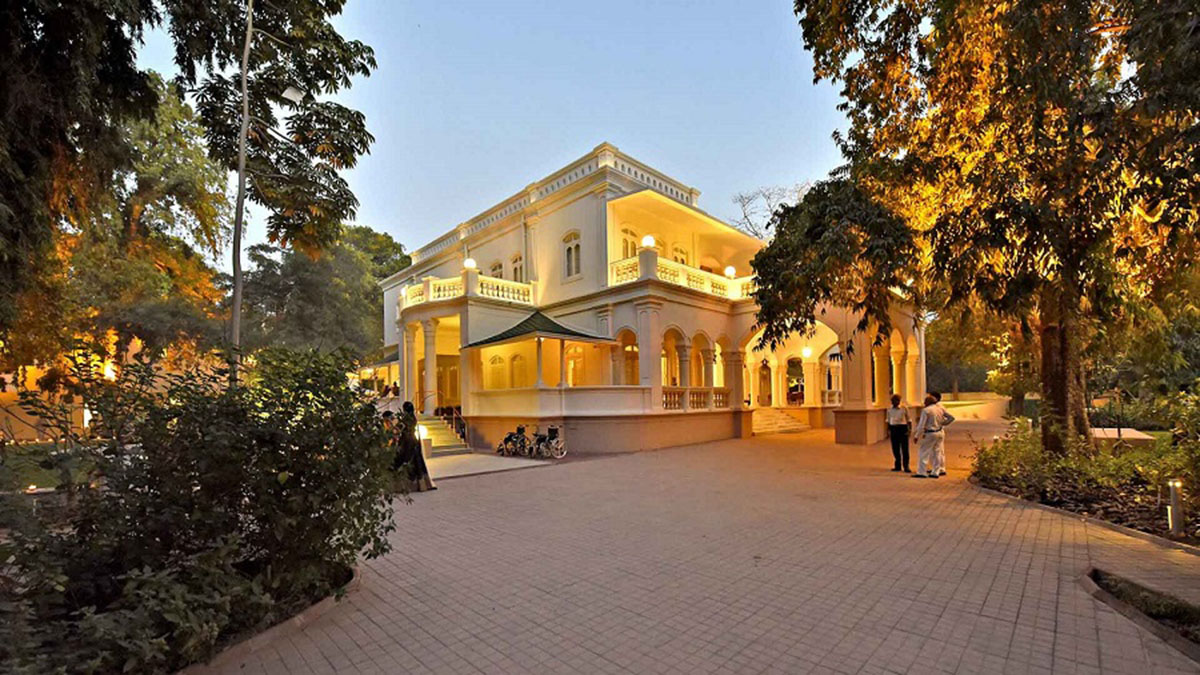
Museums that are known as tangible links to our past have the space to conserve ideas, truths, and evidence to support them. It is a repository of cultural memory, artworks, and historical artifacts for future generations. They give a unique interactive experience, with a flavor of local context along with educating about our roots and belongingness. It is also an integral piece of one's soul since one visits them often in their childhood, the museums in Bhopal, Jaipur, Ahmedabad are Sunday destinations for many, and has also become the places of reflection when for Design and Architecture students and zones of peaceful silence to enjoy solitude with numerous expressions for many visitors.
Ahmedabad houses a number of uniquely distinct museums imprinting admiration for its art and architecture but the first visit to the Kasturbhai Lalbhai Museum gives you a nuance about the ambivalence of the existence of modern and contemporary manifestation of people, cultural importance, and mindsets.
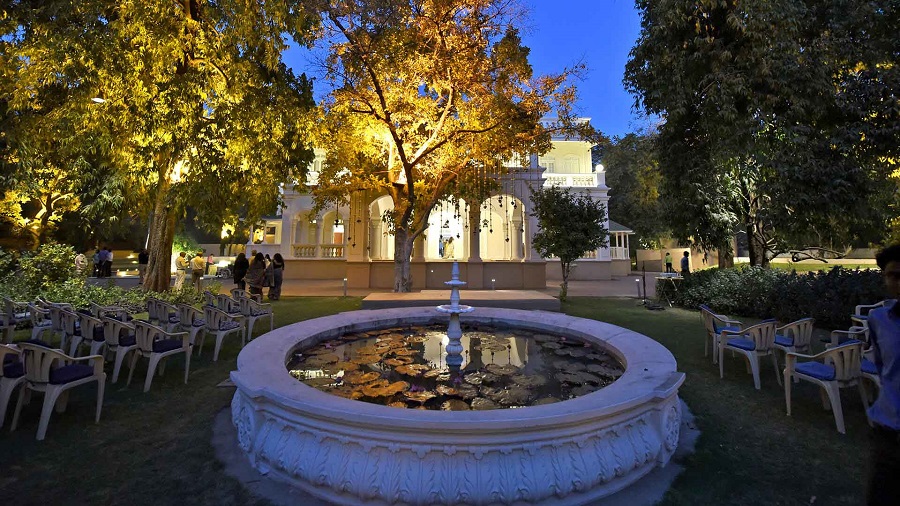
View from the front lawn of the Kasturbhai Lalbhai Museum. Image © Kasturbhai Lalbhai Museum
Approaching the building amidst the natural landscape cuts the clutter in the mind, focusing the inquisitive energies to look around and feel the presence of the simple colonial structure merging with the surroundings. The entrance plaza is a pause to recollect your sensibility before you are prepared to walk in for the tour. As one walks in, the first small square room, known as the introductory room, houses the detailed report showing the journey about the conservation of the building with two sitting portraits of Kasturbhai and his wife Tarlaben. Moving ahead to the mughal miniature rooms hooks most of the attention on the interior, art deco furniture, and architecture of the building. Following the Pahari and Rajput miniature room, is intrigued by looking at the details and listening to the description of the scene painted in the form of miniature art.
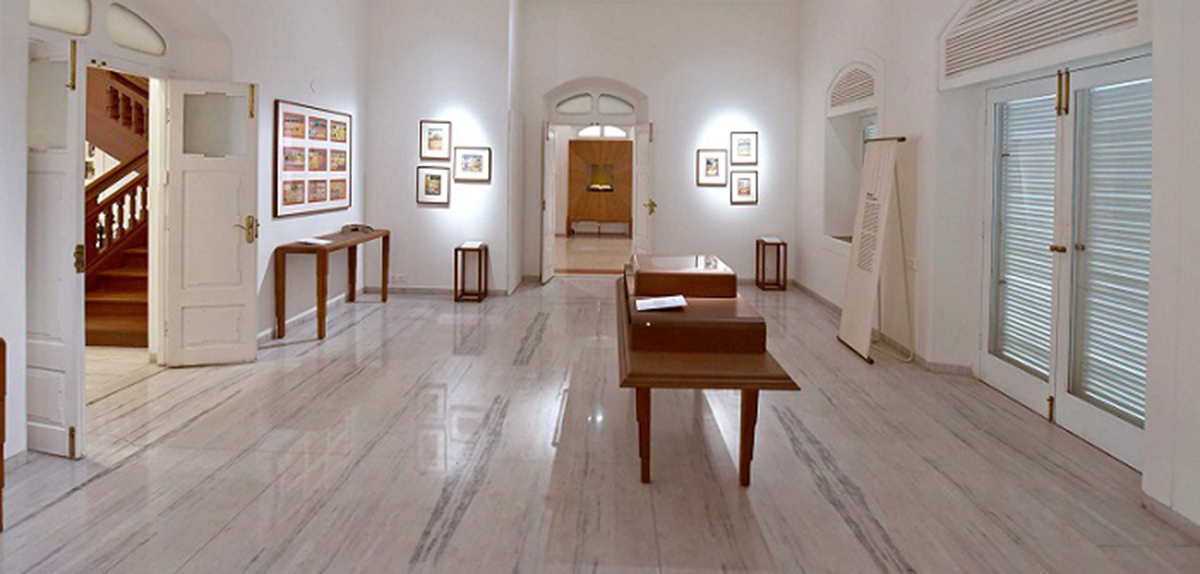
View of Pahari and Rajput miniature room showcasing indigenous painting styles of the Hindu kingdoms of Rajasthan and Punjab hills. Image © Kasturbhai Lalbhai Museum
Unlike Mughal paintings which were dramatic and objective, one founds the addition of the exact expression of the society with the use of subdued colors and intricacy in the Rajput paintings, whereas in Pahari paintings the elements such as the depiction of eyes, face and the flat perspective with the use of vibrant colors made it more focused on the white background. Also, it was noticeable that the overall composition is holding many views in a single frame.
Going ahead to the Rasmanjari Nayak Nayika room, Tibetan drawing-room, Bengal revival room, and library, the eyes gaze on firstly noticing the furniture, sculptures, interiors and lastly moving to the paintings. The mythological themes explored by Nandlal Bose in the Bengal revival section establish associations in the micro and macro dimensions, embracing the then cosmos thinking of the world, the existence on one side, and of becoming pure interiority on questioning the purpose of life is on the other. The size of the paintings being very small is appropriately highlighted and focussed by keeping the bordering frame thin and the wall white and empty.
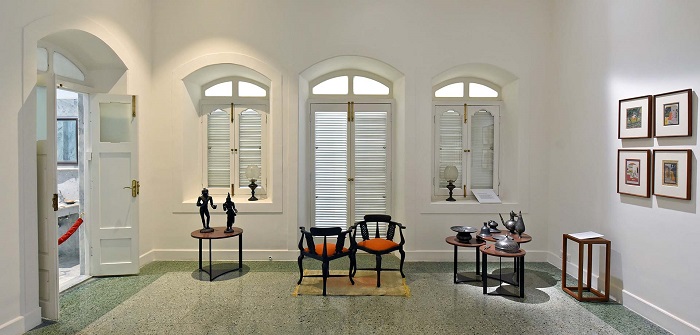
View of Rasamanjari - Nayak Nayika room showcasing the Bidri furniture collection. Image © Kasturbhai Lalbhai Museum
It was not just the paintings that were preserved but also the physical form of the building, the art deco furniture which was an exhibit making spaces dynamic and uncontained. Though the tour demanded strict movement in a particular direction that lacked the story, that if was present could have bound the progress.
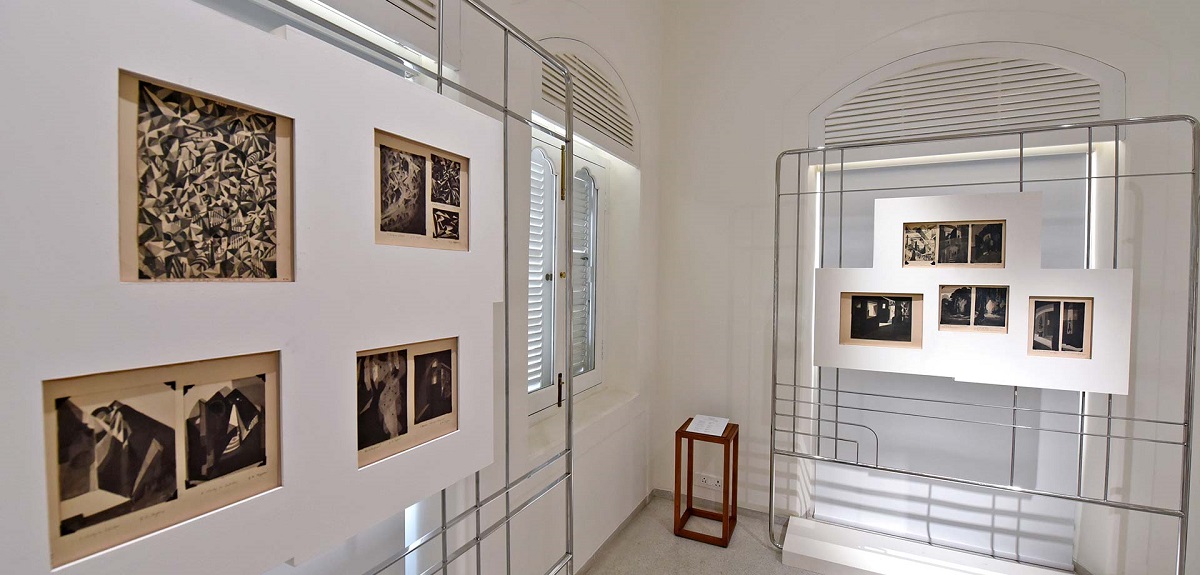
View of Bengal Revival room of Bengal School, an influential art movement, which was originated in the early twentieth century, primarily in Kolkata and Shantiniketan. Image © Kasturbhai Lalbhai Museum
Behind the heritage building, the Claude Batley building housed the exhibition Indigo which was on modern art. All the paintings, sculptures, installations were based on the color indigo which makes one ponder on the power, existence, the influence of a color which is not very noticed but widely used. The galleries are well designed, where one could spend as much time as required and capture the spirit of the setting.
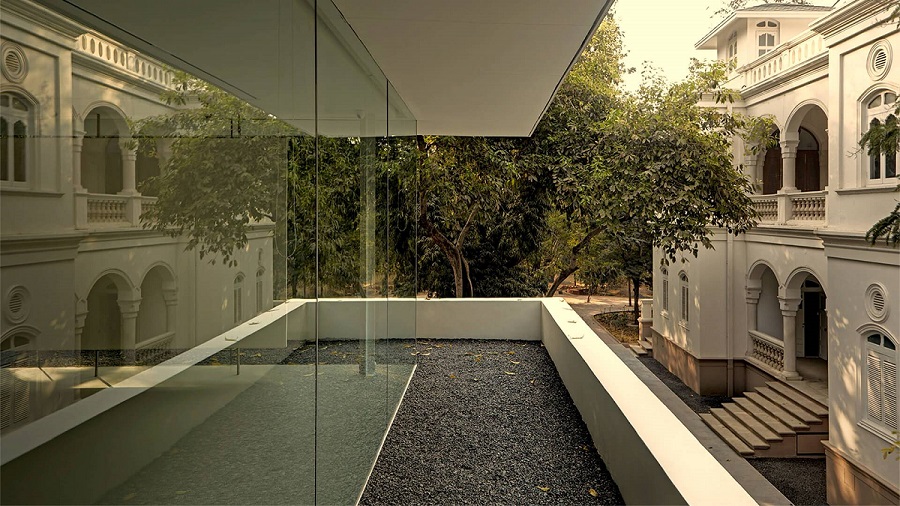
Exterior view of glass gallery in Claude Batley building. Image © Kasturbhai Lalbhai Museum
The museum gives a contrasting experience of revisiting the art and architecture of the past with the conclusion on the modern century art and craftsmanship. The paintings and artwork explained the nature of the function and the history of a place whereas the architecture of the museum complex was not restricted to the entrance, facade, element, but to the behavior of the program and to the very spaces within the building itself. It has achieved a satisfactory microclimate and reinterpretation of traditional and natural elements to derive energy.
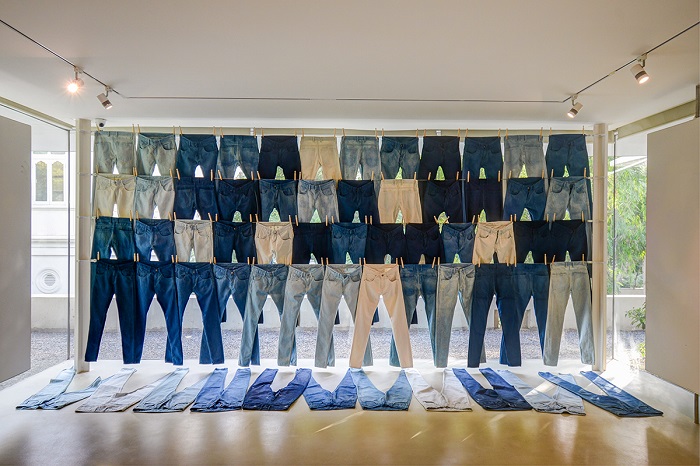
Explorations in Indigo | 27th January - 31st August 2019. A Precursor to The Arvind-Indigo Museum. Image © Kasturbhai Lalbhai Museum
The second most visited museum in Ahmedabad is the Kanoria Arts Centre, it already had an edge for art and architecture lovers as it is designed by the Pritzker Prize Laurette, Balkrisha Doshi. The art gallery is linear but the play of natural light coming from the roof and the sliced windows show the minimalistic approach to gain maximum required resources. The form itself is very inviting and different which gathers masses for public exhibition. The interior and the exterior of the gallery are in contrast but here too it is kept white inside to contain all the artwork that is displayed.
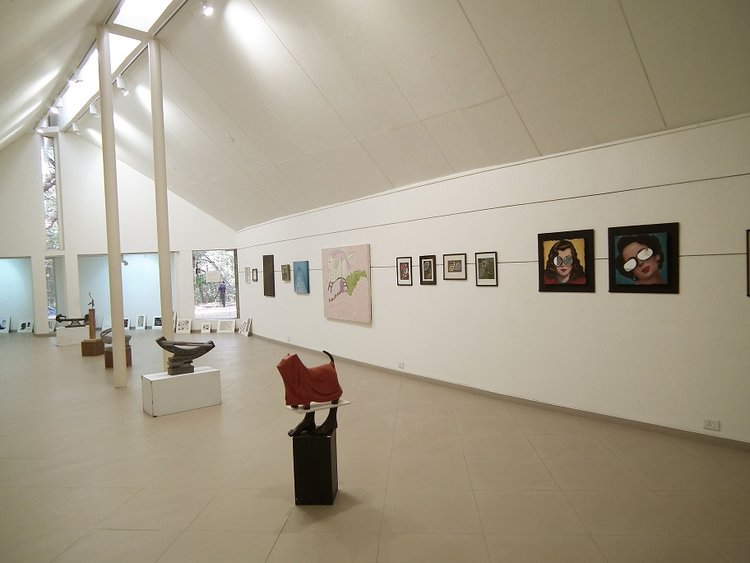
Interior view of Urmila art gallery. Image courtesy of Kanoria Art Centre
Both these places visibly show the contribution of the individual efforts of Kasturbhai and Urmila Kanoria, coming from an industrial background they both had keen interest and love for art. Not as an artist but as an admirer they wanted to create a space to house art or create a center to learn and do art. The values associated with art and its practice have changed with time, affected by technology, materials that are shifting from emotions to moreover visual appeal, and lack of a story but carrying a dominance of a message.
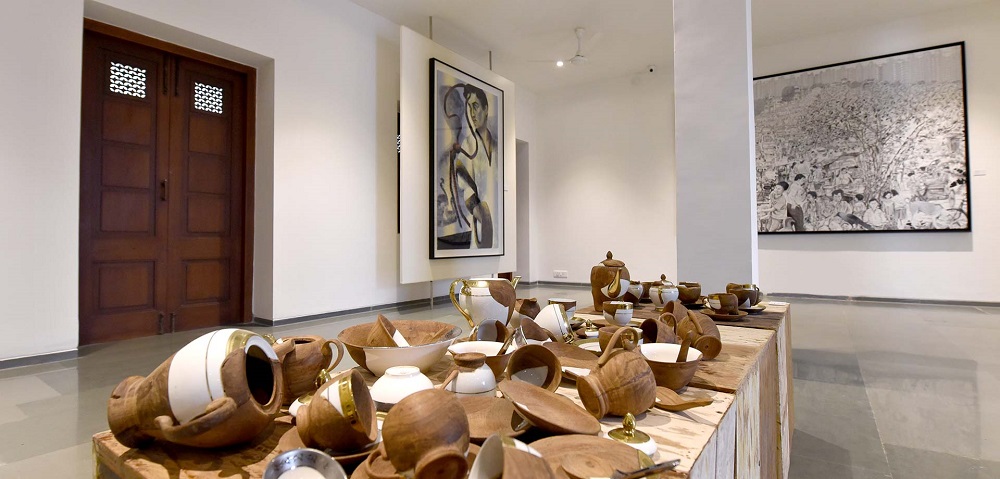
First two galleries of Claude Batley building housing works of contemporary artists. Image © Kanoria Art Centre
The art institutions and museums have emerged as the centers for learning, admiring, and experiencing the innovative atmosphere, the practice of which slowly is now transforming into the culture of civilization and creative industry which has a huge market of tourism economics which somewhere if regulated properly is an asset for the country and if ignored will end up in a clone bazaar losing its value, origin as a piece of beautiful scenery in a foreign land.
Top image: View of the colonial museum building (built-in 1905) from the site entrance. Image © Kasturbhai Lalbhai Museum.
